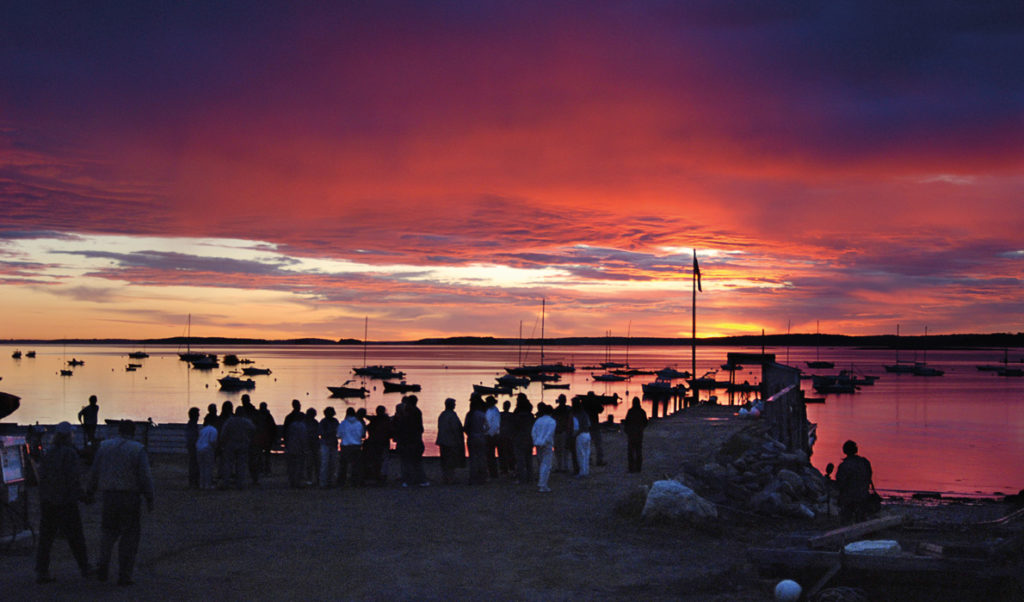A good friend from the Middle East moved to the Maine coast, to a small island community. I asked him what that was like, how difficult it was to find elements in his new community that reminded him of his birthplace. With a large smile and open arms, he said he loved his community.
“It’s just like home,” he said. I was surprised.
When I moved here 15 years ago, I found the complexity of Maine’s island and coastal communities overwhelming. The deep-seated sense of place and the necessity of relying on neighbors over the course of a lifetime were unfamiliar, having grown up on the east side of Cleveland. I learned about the many small communities that exist within one small community here—the friendships, divisions, animosities, and alliances were clear because of the small size of these places.
How could someone from the Middle East move to a Maine island and find it so familiar?
“It’s simple,” he said. “This place is tribal; these communities are made up of many different tribes, just like my home country. If you want to understand each tribe, then you have to sit down for tea with the leaders of each tribe and learn about them.”
He couldn’t have been more wise, his statement more true.
The communities we care about are comprised of many smaller communities. These smaller “tribes,” as my friend called them, are defined by lineage, local schools, how one makes a living, seasonality, and much more. Our communities also include those who avoid all associations and defy definitions.
This diversity is part of what makes our communities special, but it can also make for tensions. These tensions can flare easily, particularly when a group within the community wants to make a large investment in its future, be it building a broadband network, investing in the local school, or building a new child care facility. These investments often impact the entire community through increased taxes and additional support from everyone, including philanthropists.
How is someone working three jobs able to understand the perspectives of those who visit for three weeks? The support and understanding of both groups are required to move a community forward.
The difficulty in bridging this divide is a real concern if our communities are to grow and thrive. When the various subgroups are out of synch, one group often feels taken advantage of by the other. More often than not, the year-round residents who vote at town meeting will pass budgets that rely heavily on seasonal residents who own high-value waterfront properties. Philanthropists, through their generosity, will additionally support cultural and social institutions like libraries, historical societies, and arts programs that enrich the lives of all.
Yet the seasonal community comes and goes, while the year-round community works through the winter to make a living that is often precarious because of fluctuations in the local and global economy and an increasingly unpredictable ocean.
Given these dynamics, it is essential to maintain excellent communication between these groups so they are aligned when investments are made in a community’s future. I’ve learned that this work is done every day by people I now think of as “bridging personalities.”
These are the people who can walk easily between the communities within a community, like my friend from the Middle East. They speak the various languages of their community, being at ease on the wharf, at a fundraiser for the community center, or at a cocktail party. And they respect the diversity of customs within a community. They empathize with the very real challenges each of these groups face.
Perhaps not surprisingly, many of the people I know in these bridging roles are from marriages that bring year-round and seasonal residents together in a single family. Others grew up locally, left the community and then came back. These families step in to lead the community through the most divisive of issues, navigating to calmer waters. Above all, they are consummate diplomats.
I hope you are able to find moments in your busy schedules to enjoy the amazing days we have ahead of us in September and October. When you do, think about who the bridge personalities are in your community and the role they play in sustaining the communities we all care about.
Rob Snyder is president of the Island Institute, publisher of The Working Waterfront.





